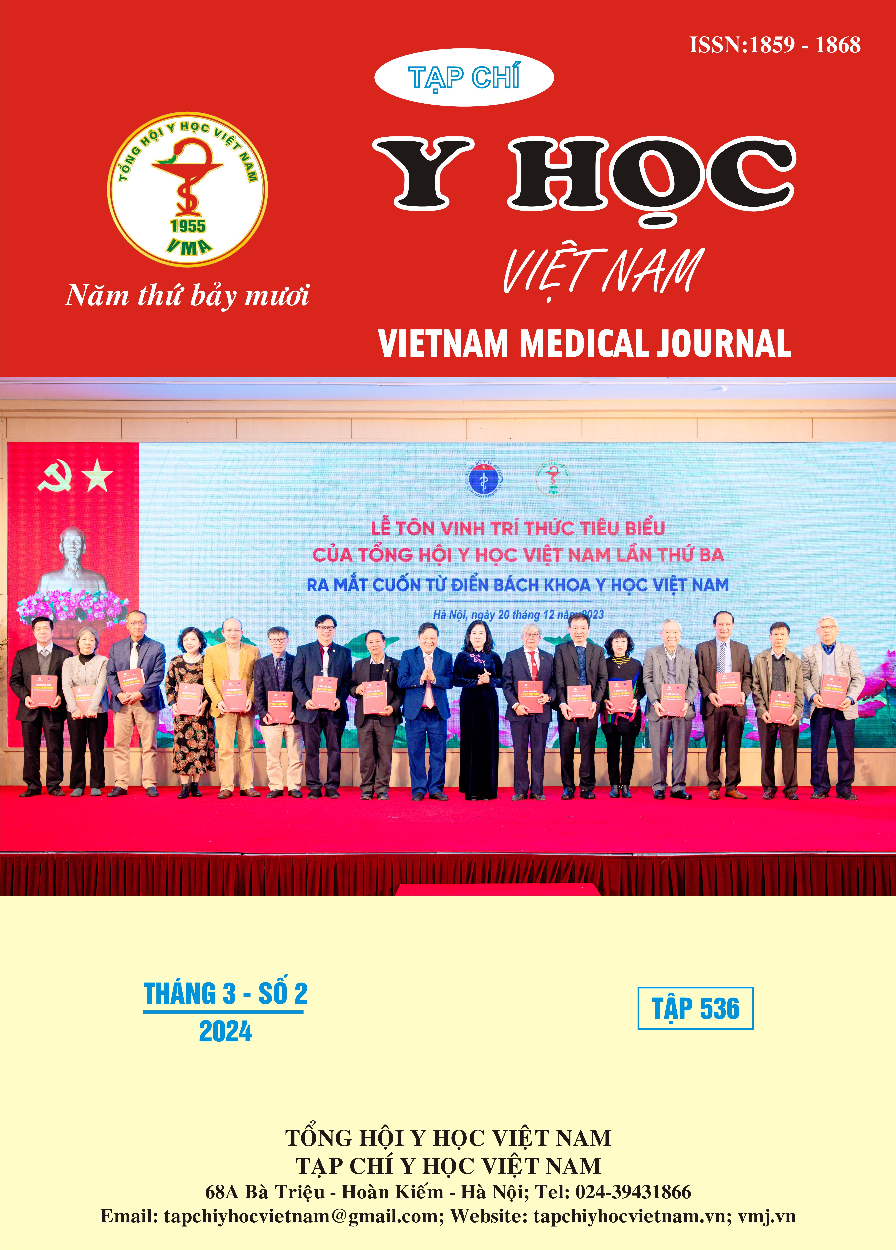LABORATORY CHARACTERISTICS IN BURN CHILDREN
Main Article Content
Abstract
Objectives: Describes the subclinical characteristics of 383 burn children admitted to Children's Hospital 1. Materials and methods: 383 burned children were treated at the Burns - Plastic Surgery Department of Children's Hospital 1 from February 1, 2021 to August 15, 2022. Research method is descriptive prospective, longitudinal follow-up. Results: During the study period from February 1, 2021 to August 15, 2022, there were 383 admissions to Children's Hospital 1. There was leukocytosis reaction after burns, the highest was 49,3 x 103/µL, the highest blood Hct was 57%, the highest blood platelets was 743 x 103/µL. There was 57,1% decrease in blood albumin when burn area ≥ 40% TBSA and there was a very close negative linear correlation between burn area and blood albumin (R = -0,72; p = 0,003) with regression equation linear is blood albumin = -0,029 x burn area + 3,416. Have the lowest blood sodium of 127 mmol/L and the highest blood sodium of 153 mmol/L; the lowest blood potassium is 2,2 mmol/L and the highest blood potassium is 6,1 mmol/L. The lowest serum calcium was 0,9 mmol/L and the highest serum calcium was 1,4 mmol/L. The highest blood CRP was 210,7 mg/L. The highest blood lactate 21,5 mmol/L. Conclusions: In 72 hours after burns, children can cause clinical weight disorders of hematology, electrolytes, blood albumin and other subclinical disorders. Timely and appropriate correction of subclinical disorders will increase the quality of treatment for pediatric burns.
Article Details
References
2. Herndon DN. Epidemiological, Demographic and Outcome Characteristics of Burns. Total burn care. Elsevier Health Sciences; 2018:pp. 35-50. vol. 3.
3. Lê Thế Trung. Đại cương bỏng. Bỏng những kiến thức chuyên ngành. Nhà xuất bản Y học; 2003:tr. 17-72. vol. 1.
4. Guillory AN, Porter C, Suman OE, Zapata-Sirvent RL, Finnerty CC, Herndon DN. Modulation of the hypermetabolic response after burn injury. Total burn care. Elsevier Health Sciences; 2018:pp. 301-306. vol. 2.
5. Flores O, Stockton K, Roberts JA, Muller MJ, Paratz JD. The efficacy and safety of adrenergic blockade after burn injury: a systematic review and meta-analysis. Journal of Trauma Acute Care Surgery. 2016;80(1):pp. 146-155.
6. Tam N. Pham LCC, Nicole S. Gibran. American Burn Association Practice Guidelines Burn Shock Resuscitation. Journal of Burn Care & Research. 2008;29(1):pp. 257-266.
7. Asena M, Aydin Ozturk P, Ozturk U. Sociodemographic and culture results of paediatric burns. International wound journal. 2020;17(1):pp. 132-136.


